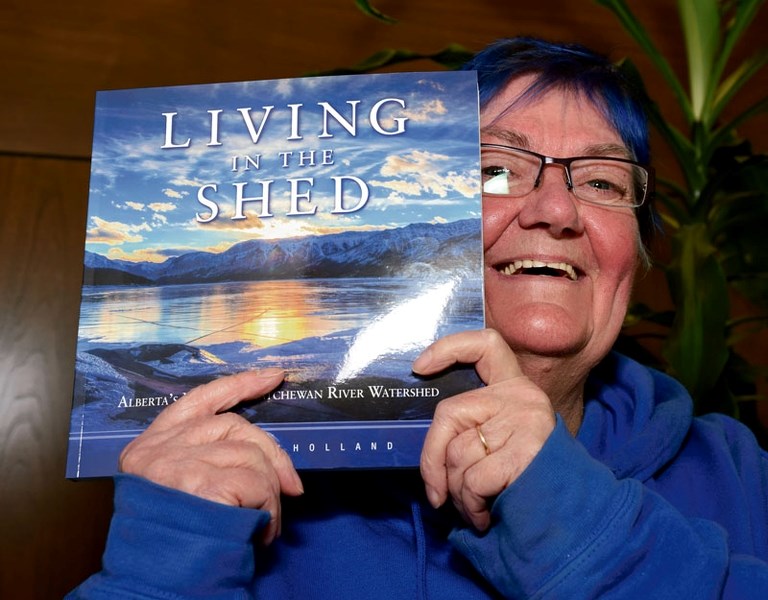Where could you find the finest freshwater fish in the world in 1872?
The Sturgeon River, according to George Grant in his account of Sir Sandford Fleming’s famous cross-Canada expedition of that year. Grant described “Sturgeon Creek” as a place where you could catch 25-pound fish that were “the finest fresh water fish, perhaps in the world.”
That’s one of the many facts found in Living in the Shed: Alberta’s North Saskatchewan River Watershed – a new book by St. Albert author Billie Milholland released this month.
The 304-page full-colour book is an initiative of the North Saskatchewan Watershed Alliance (NSWA), the water stewardship group that oversees the North Saskatchewan River.
The NSWA plans to give 2,000 copies of the book to Alberta schools and public libraries and sell 5,500 others to cover printing costs and future, more detailed books on each sub-watershed, Milholland said.
Most of the NSWA’s past publications have been scientific documents that are tough for the average person to get into, said Milholland, who works for the group. This is a much less technical piece that tries to tell the story of the land over time to get people interested in their watershed.
“This is something I can give to my neighbours.”
Milholland said she spent years compiling information for this book, visiting each sub-watershed and interviewing local experts such as former Sturgeon County councillor Joe Milligan about the history of each.
“It was an amazing experience,” she said, and she was astounded by the tales of challenge and co-operation faced by the early settlers of the watershed.
“It gave me a lot of hope for what we’re able to do.”
The book includes detailed maps of the 18 sub-regions of the North Saskatchewan watershed (which includes the Sturgeon), as well as scores of landscape and wildlife photos taken by Edmonton’s Images Alberta Camera Club.
The book details the birds, fish, plants, and other animals of each region, and summarizes the history of each with a focus on changes in land use.
Residents harvested vast stands of trees from around Calahoo in the 1930s, for example, and took thousands of whitefish a year from Lac Ste. Anne, the book notes. They would temporarily dam the Sturgeon River to float rafts, and cleared vast tracks of wetland from its banks.
“(The river is) out of water because it doesn’t have the trees and the bushes and wetlands that it used to,” Milholland said.
The book includes many obscure historical facts, such as how Namao is named after the Cree term for sturgeon (Nameowak) and how you used to be able to take the Moonlight Express from Edmonton to Alberta Beach for a dollar.
Ken Crutchfield, St. Albert resident and NSWA vice-president, says he’s lived here for decades and is still surprised by some of the stuff in this book.
“The sad thing is for a lot of us is that we live here but we know very little about where we live,” he said.
Each section of the book ends with a description of the major environmental threats faced by a part of the North Saskatchewan watershed and regional efforts to address those issues. For the Sturgeon, those threats include invasive fish and plants as well as urban sprawl.
The book is meant to whet a person’s interest in their watershed and ask them what they plan to do to protect it, Crutchfield said.
“This is our habitat. If we don’t look after it, it’s not going to be there to support us when we need it the most.”
The book is now available at the Bookstore on Perron for $25 and at the St. Albert Public Library.




